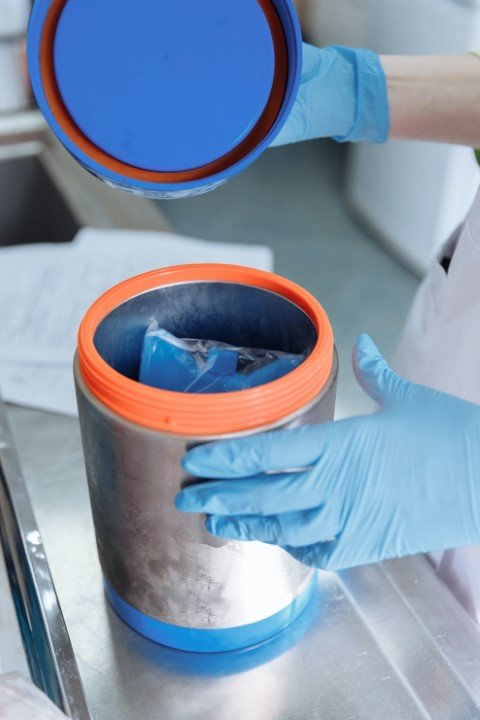The Future of Heat – The 2 Billion Tonne Carbon Challenge!

In my recent presentation at the Future of Heat conference in Birmingham, I made a call to arms to act now on heat. We simply cannot wait for ‘silver bullet’ technologies to take away our problems when we have the technology now to do something about it! Through building an efficient, low temperature, digitally linked system significant decarbonization of heat is achievable.
In the following article I summarise why to accelerate the decarbonization of heat we must:
Ensure new buildings are highly efficient and future-ready and work to improve existing housing stick needs to be accelerated.
Focus on digitalizing the energy system to make it truly ‘Smart’.
Grow no regrets options such as efficiency improvements, heat networks, and waste heat recovery.
So where are we now?
About half of energy consumed is used for heating.. half of which is used for heating buildings and providing hot water. Contributing 22% of UK greenhouse emissions (101 million tonnes of CO2 per year).
There are about thirty million homes in the UK of which 83% rely on natural gas for heating. It’s interesting to note that in 1970 it was only 43%. Gas heating has grown in a world of abundance and low costs. Leaving us now with a legacy of poorly insulated homes contributing over 5 Tonnes of carbon per home per year to emissions – where the technology exists to quickly half these emissions today (so over 2 Billion Tonnes of CO2 unnecessarily emitted between now and 2050 if we carry on doing what we are doing now). And that’s just using the domestic figures never mind commercial!
To date, significant steps have been made in reducing the carbon intensity of power in fact 75% of the reductions since 2012 have come from power. The UK spending a week without generating any electricity from coal recently demonstrates just how far we’ve come!
These improvements mask little improvement in heat and transport. With electrification of transport progressing (although too slowly) ‘Heat’ remains the final frontier of the epic energy transition which we are currently experiencing.
We now need to urgently address the challenge of decarbonizing heat which will require a transformation change to the energy system. Through investments in energy efficiency, digitalization and networks now we can make a change similar to that achieved in the electricity generation industry in the preceding decade. By making strong choices now we can (and must) achieve a step change in decarbonization similar to that achieved in power.
Energy Efficiency
So where do we start? Energy Efficiency matters. Before we discuss how to generate ‘heat’ in different ways it’s absolutely essential to look at how we can use less and also how we can future-proof systems to be able to work well with future technologies.
A typical ‘A’ rated house has energy costs of around £400 a year compared to over £2000 for a ‘F’ or ‘G’ rated dwelling. The Majority (14m) of properties in the UK are rated ‘D’ with consumption around double of an ‘A’ rated building. By 2050 95% of homes will need to be ‘A’ rated – that means improvements to the energy efficiency of 15.5m homes between now and then (That’s 500,000 a year between now and then)
The real key to this is that heating properties inefficiently typically use higher temperatures. The recent study by Ramboll on converting the energy system of the town of Cowdenbeath to different systems highlighted that in all scenarios investing in energy efficiency and running at lower temperatures had benefits in all scenarios.
New funding mechanisms are required now to incentivize rapid investment in energy efficiency.
New Build Houses
The new build has an important role to play. Each year a further 143k new houses and flats are built (which could easily rise to 300k). New buildings should be built with the highest levels of efficiency. Banning domestic gas boilers from 2025 is a strong step in the right direction and will encourage investment in alternatives – with further investment bringing the costs of technologies such as heat pumps down. Similar to in offshore wind where through industry and government backing costs were substantially reduced rapidly as the industry grew. Establishing high-efficiency, low-temperature systems in these properties will pay dividends later.
Low Carbon Heat Networks
Further to energy efficiency comes a further ‘no regrets option’ particularly where there is a high density of heating or cooling demand. Significant savings in energy consumption can be achieved where heating and cooling are situated in close proximity. E.ON’s ‘Ectogrid’ for example seeks to create a ‘breathing’ network where heat is used again and again as it passes through the city environment. Academic research such as Lot-Net is making excellent progress in the area of understanding how these ‘breathing’ networks can be established.
One cornerstone of these networks operating well is the integration with the end consumers… where good building insulation and low-temperature systems smooth peak demands and lower overall temperatures. These enable systems to tap into ‘waste’ heat such as sewage, rivers & tunnels using heat pumps with extremely high Coefficient of Performance (a high cop means lots of heat is produced for very little electrical input).
Heat networks also provide a significant storage opportunity. In times of high demand, networks can store significant volumes of energy as well as potential using ‘phase change’ storage. This can make a huge in road into the challenge of smoothing the peak energy demand.
What matters is that networks become smart – providing grid balancing through utilizing their immense storage potential.
Heat Pumps & Hydrogen
Heat pumps have the potential to provide a replacement technology to existing gas boilers. They can provide an important role in transitioning to a low-carbon system. Hybrid heat pumps, which use gas to meet the occasional ‘peak’ heat demand periods offer a potential no regrets option. These are good options for retrofit. It’s however worth highlighting that installations need to have two key features. Firstly, the heating system needs to be improved to operate at lower temperatures and secondly the system needs to be ‘SMART’ to limit peak demand.
The evolution of the new build market is extremely relevant to lowering costs and preparing for the mass rollout of heat pumps into the retrofit market.
The government’s future homes standard will play a key role in supporting the deployment of heat pumps at scale in new builds, providing confidence to the supply chain to invest and innovate to meet this demand.
Hydrogen remains a high-cost option, requiring either large volumes of very low-carbon electricity or carbon capture and storage. Of the options that can be deployed today at scale it won’t be viable for some years to come. Should we wait for Hydrogen at a time when action is required today? In ten years’ time when the technology might be ready, we will have already emitted well over half a billion Tonnes of Carbon from our housing stock unnecessarily.
What will the system look like to support the transition?
Heating is distinctly seasonal with peak demands being 5 times higher than peak electricity demand, needing c300GW of energy to be delivered at peak. For reference, the electricity grid is capable of delivering around 60GWe at peak. Whether you use heat pumps or Hydrogen this is a challenge to overcome… technologies such as batteries, pumped storage, and smoother consumption can make a huge difference. Clearly, the electrification of heat will increase demand significantly over time – but a significant amount can be done to meet this expectation. Through building an efficient, low temperature, digitally linked system electrification of heat is achievable.
A call to arms!
I believe that the challenge of the heat transition can be achieved if we:
Invest in future-ready, highly efficient buildings which operate with lower demands and temperatures whilst accelerating improving the existing housing stock.
Support heat networks and other low-temperature systems – in particular those that can utilize sources of waste heat.
Invest in making the system ‘Smart’ through smarter grids, smart meters, and systems to facilitate time-of-day pricing, load shifting, and storage.
To do this we need to act now to incentivize and encourage rapid growth in energy efficiency, digitalization, and low carbon heat sources. With the right environment, we can absolutely achieve rapid decarbonization of heat over the next decade replicating that achieved in other sectors. We have the technology now to take big chunks out of the 2 Billion Tonne challenge – so why wait? The earlier you start the less you emit. A goal of zero by 2050 is great – but we mustn’t miss the clear fact that savings now matter. We can do so much more by acting now… so why wait?
Now is the time to act!
Future of Thermal Power Plants in a Carbon Constrained World


.jpg)


